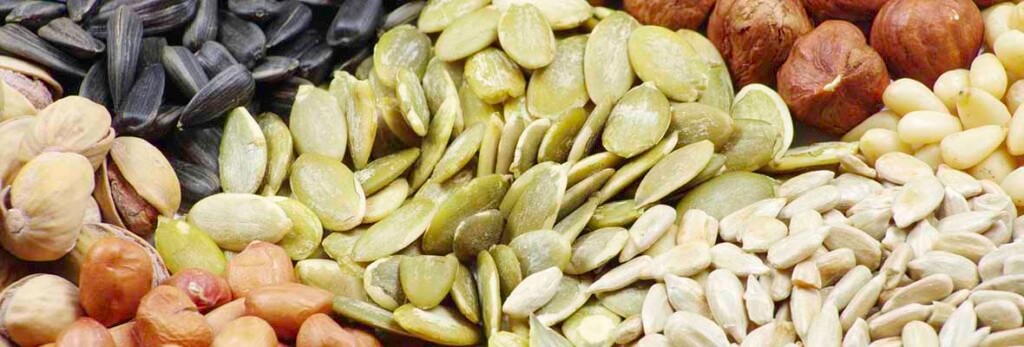Five Foods to Prevent Belly Fat

Belly fat.
I don’t know a single person who enjoys hearing those two words.
Numbers on a scale mean nothing to a person trying to lose inches around their middle. They don’t care about the number as much as the size of their waistline. While most people want a smaller belly so they can wear their favorite old jeans or sport a bikini at the beach, there are also valid and important health reasons to avoid eating foods that lead to the accumulation of belly fat. Uggh! I said it again. Let me rephrase: there are good reasons to avoid foods that lead to a little extra around the tummy that have nothing at all to do with how you look or the clothes you wear.
First, the visceral fat lining the internal organs—i.e. around your midsection—is different than the subcutaneous fat under the skin. Visceral fat is necessary to have, but excess visceral fat is no good: it’s linked to type II diabetes, cardiovascular disease, non-alcoholic fatty liver disease, and more. And yes, even thin individuals can have problems with visceral fat. Thin doesn’t automatically mean healthy. That said, most individuals want to see subcutaneous fat disappear because that’s what they notice first in the mirror and that’s what gets in the way of the various activities they want to do.
The foods on the following list have two amazing qualities: they keep the both subcutaneous and visceral fat down, and they’re packed with essential nutrients that are good for your overall health and wellness.
-
Whole grains.
Oats, quinoa, barley, wheat berries, farro, and wild rice should be part of every health conscious person’s meal plan. Multiple long-term studies show whole grains and foods high in dietary fiber prevent weight gain. What’s more interesting is that when compared to dieters who exclude whole grains from their diet, people who include whole grains actually tend to lose more weight. However, it’s important to avoid grains with added sugar, whether they’re whole grains or not. For example, instead of buying pre-packaged oatmeal flavored with brown sugar, it’s better to choose plain whole oats and add ground cinnamon and nutmeg.
-
Leafy greens.
Spinach, arugula, kale, Swiss chard, collard greens, romaine lettuce, and watercress are just a few leafy greens you need to eat regularly. They’re all loaded with water, lutein, vitamin C, vitamin K, vitamin A, vitamin E, and the oh-so-important dietary fiber. Leafy greens are especially high in insoluble fiber, which helps move things along your digestive tract. When you eat roughage consistently, you can alleviate irregular gastrointestinal issues, bloating, and constipation, especially if you remember to drink plenty of water to wash it all down.
-
Beans and Legumes.
These plant based protein sources are very high in soluble fiber. A half-cup portion of cooked legumes provides as much soluble fiber as two cups of cooked oatmeal. A study published in 2003 followed more than 74,000 women over the course of twelve years and showed those who ate a high-fiber diet “consistently weighed less” than those with diets lower in fiber and whole grains.
-
Nuts and Seeds.
Even though nuts and seeds are high in both calories and fat, you should still eat them. Consuming 1-2 oz. per day provides a solid source of dietary fiber, unsaturated fats, vitamin E, magnesium, and small amounts of protein—all of which are great for your heart, brain, and muscles. If you’re looking for a mid-afternoon snack, nuts and seeds are the perfect food to satisfy your hunger. If you think that sounds nuts, then check this article published in the American Journal of Clinical Nutrition, which states clearly that a diet including proper portions of nuts and seeds has no adverse impact on Body Mass Index (BMI), body composition, or waist circumference.
-
Avocado.
In 2013, Nutrition Journal published a study in which researchers found overweight individuals who ate half an avocado at lunch felt more satisfied and less desire to eat over the next three to five hours than those who didn’t. Avocado also helps stabilize blood sugars—another reason to give this healthy fruit a shot. And it’s versatile: you can make guacamole, use it as a creamy sandwich spread, or add it sliced or diced on top of a salad. Avocado for the win!
To make these foods part of your daily routine, sit down on a Sunday and plan your weekly meals. Break them down by breakfast, lunch, dinner, and snacks. Getting sick of brown rice pilaf? Change up the grain and use wheat berries instead. Can’t think of new ways to use an avocado? Make a salsa use it to top off a poached egg or grilled salmon filet.
Think outside the box and your belly will love you for it!